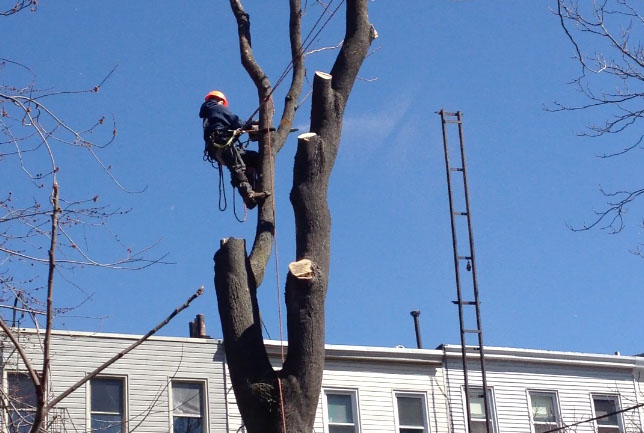When should I prune? The foundation of good pruning lies in two primary principles: (1) assess the whole plant before making any cuts, and (2) never cut without good reason.
Shrubs growing in nature thrive with little or no pruning. When a twig or branch in a rural forest has served its purpose it eventually falls to the ground. The pruning they receive is rough at best and performed by browsing animals as well as ice and snowstorms. In our NYC suburban garden design or contemporary Tribeca roof deck we can’t expect natural pruning to keep plants in an attractive condition, therefore we resort to shaping them with proper tools.
We recommend Felco pruners for our NYC landscape design practice.
Why should I prune my shrub or tree?
*Sound early training of a tree or shrub lays the foundation for a handsome, mature specimen. Understand that at any stage of growth, pruning does cause some stress to a plant, so it should never be done indiscriminately or without good reason.
*The most important and routine pruning is the removal of dead, diseased or damage tissue. The secondary reason for pruning a tree is cultural and aesthetic — to produce structurally sound specimens, to create attractive or pleasing shapes, to stimulate growth or encourage other desirable habits, such as encouraging bushy growth or enhancing flowering and/or fruiting.
What is the best time prune my shrub?
*A critical note—The timing of pruning is directly related to the age and type of flowering wood. For example, late summer and autumn flowering shrubs flower on the current season’s growth and are pruned in spring to encourage vigorous shoots that will flower later in that same year. Spring and early summer-flowering shrubs flower on the previous season’s growth and are pruned after flowering, to permit new wood to grow and ripen, then blossom the following year.
These are general guidelines from the American Horticultural Society, and there are some exceptions: flowers born on spurs, evergreens, plants that “bleed.”
Therefore,.. the best time to trim spring-flowering shrubs is right after the plant blooms; trim summer-flowering shrubs in late winter or very early spring while the plants are still dormant. If however a woody specimen (tree or shrub) is damaged, the sooner,.. the better.
Here’s a great garden design tip for designing the perfect garden -
Many of our local clients request a low maintenance garden for their NYC roof garden or Brooklyn townhouse garden. The most effective route to achieve this is selecting the right plant for the right place. This will eliminate a significant amount of corrective and unnecessary pruning. For example — if you have a small garden design idea, then select appropriate size cultivars whose maturation size is proportional to the space it will fill.
How do I prune a shrub?
When a shrub’s care has been ignored for several seasons, int can be remediated thru “rejuvenation pruning.” This is the removal of old, overgrown limbs, so new vigorous branches can take their place. This entails hard pruning the shrub tp a height of 8-12” from the crown and allowing it to regrow. “Gradual rejuvenation” is a more methodical method, that I tend to use often as a NYC landscape designer. With this gradual method you remove 1/3 of the older stems/canes/branches in each of three seasons. Naturally, the shrubs look more attractive through the process.
When is the best time to prune my tree?
Pruning any mature tree or significant tree should be done by a certified arborist. Pruning smaller trees should be done by a person with considerable horticultural knowledge for best results.
Removal of invasive Ailanthus altissima prior to installing a townhouse garden design. (click here to view finished garden)
Arbor-phobia - fear of trees or tree limbs falling on urban homes due to inclement weather. More often than not, this results from trees either being incorrectly pruned resulting in unstable conditions, or storm damaged trees that have not been cared for by their property owners. If you have trees on your property, consult an arborist .
In a small Park Slope, Brooklyn garden design we hired an arborist to correctly prune one of the oldest Gingko biloba in New York City.






